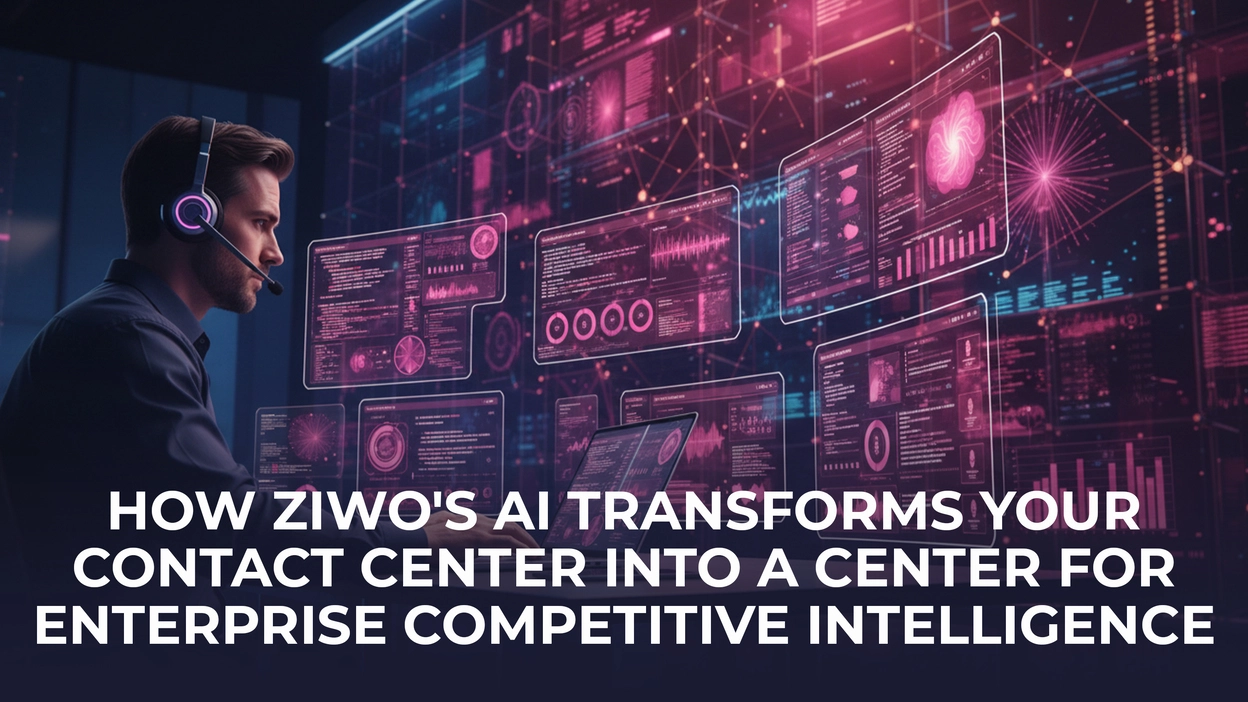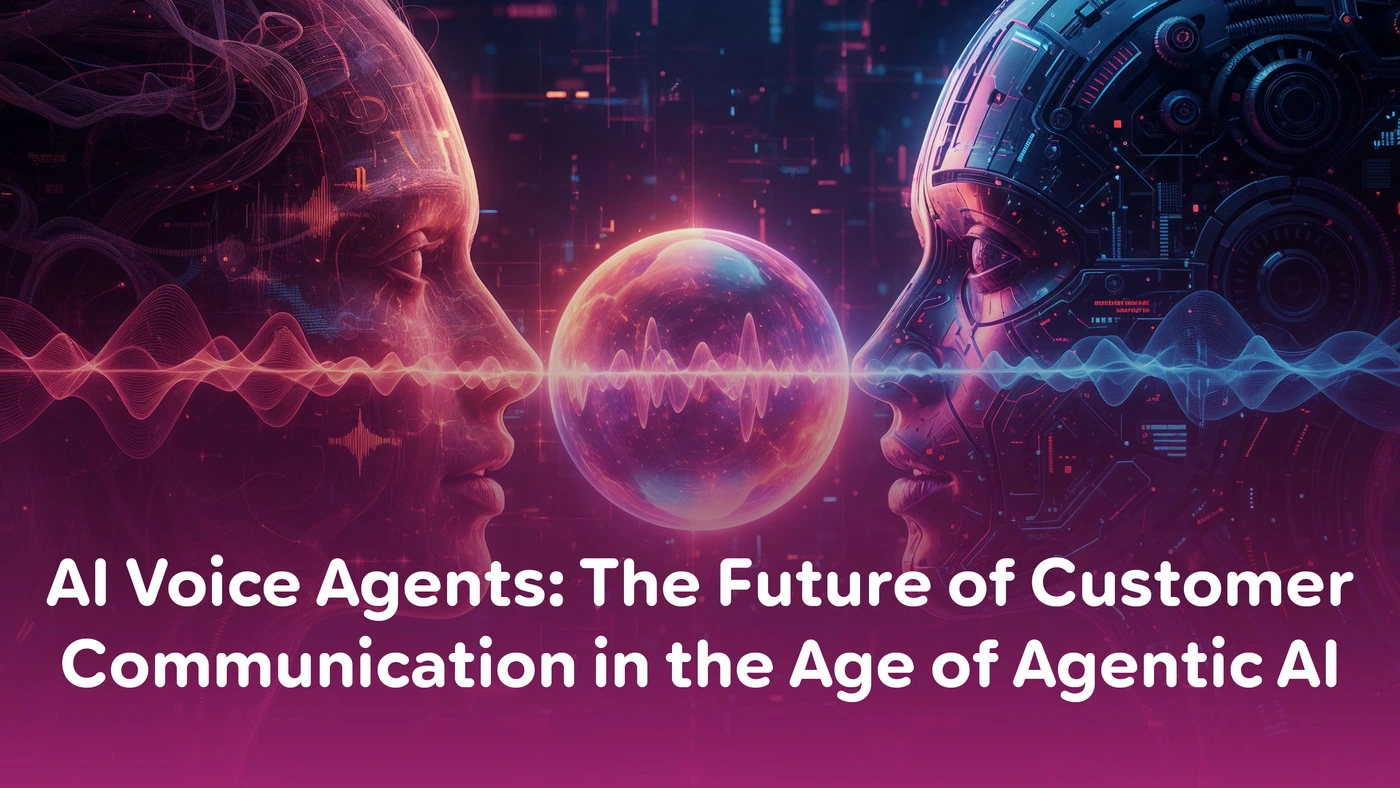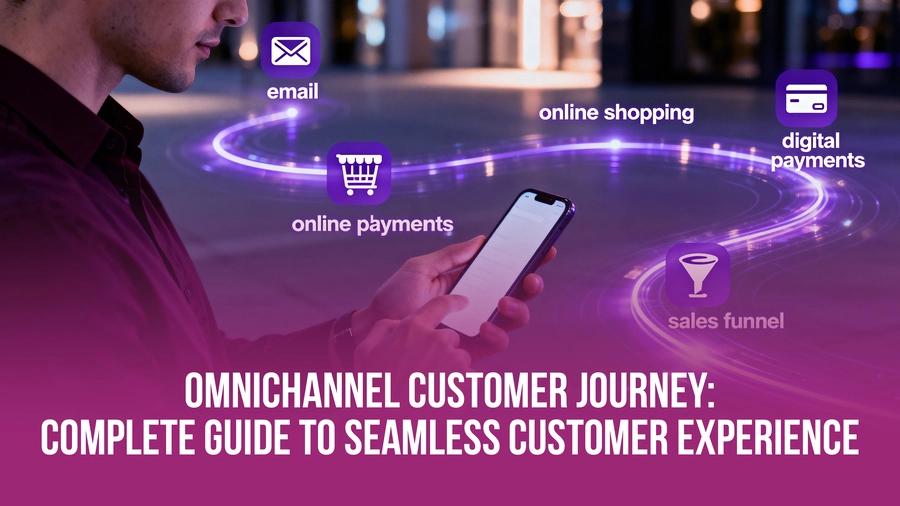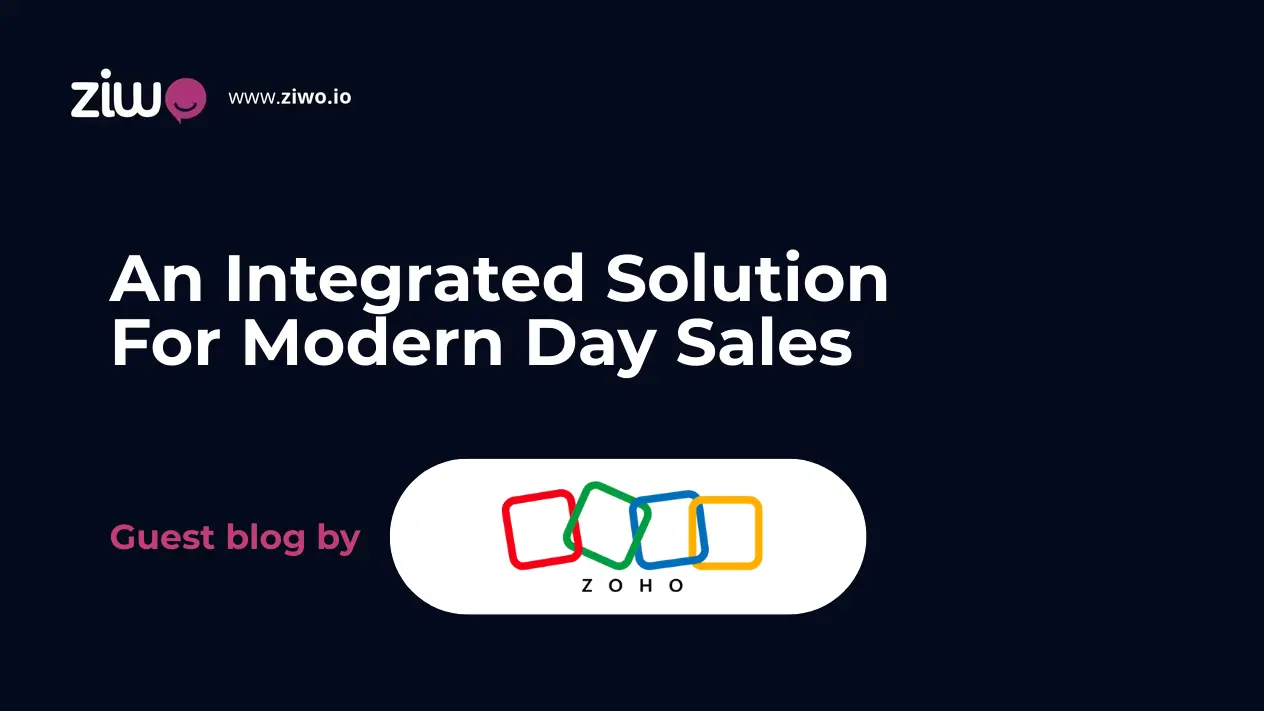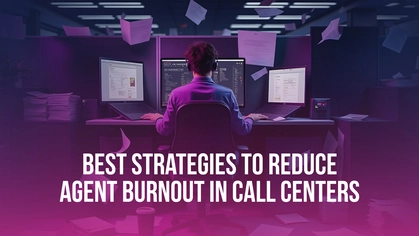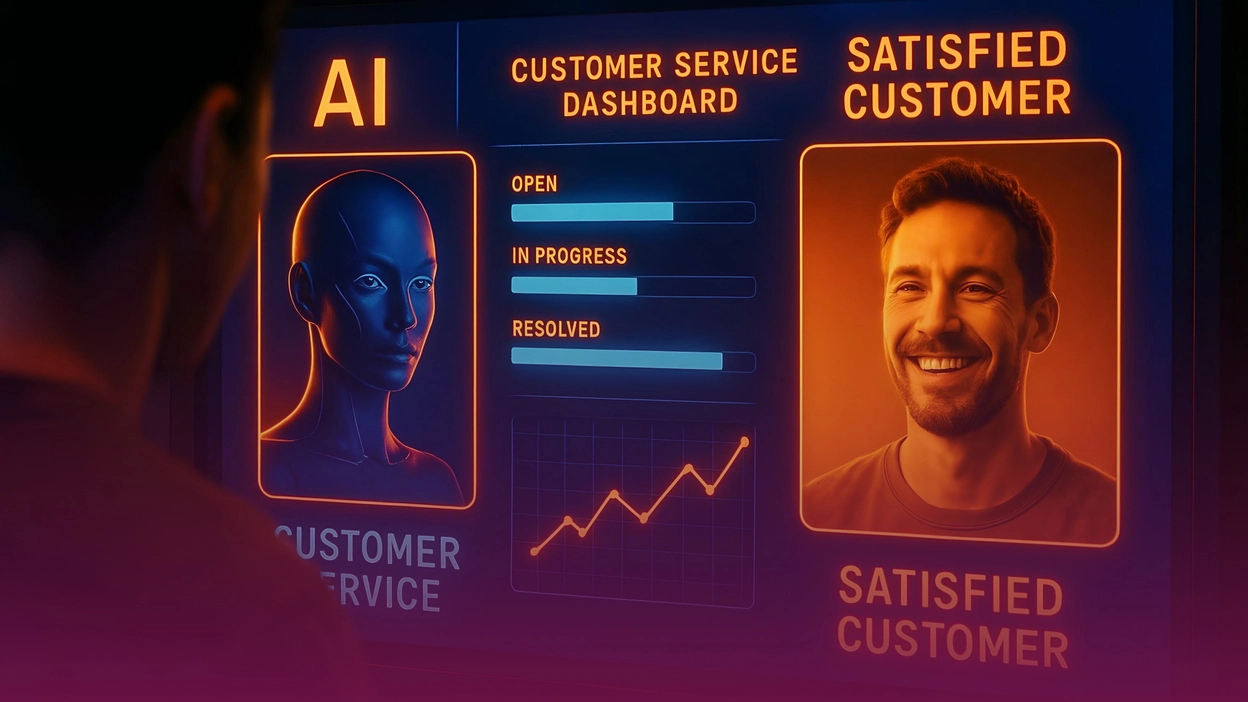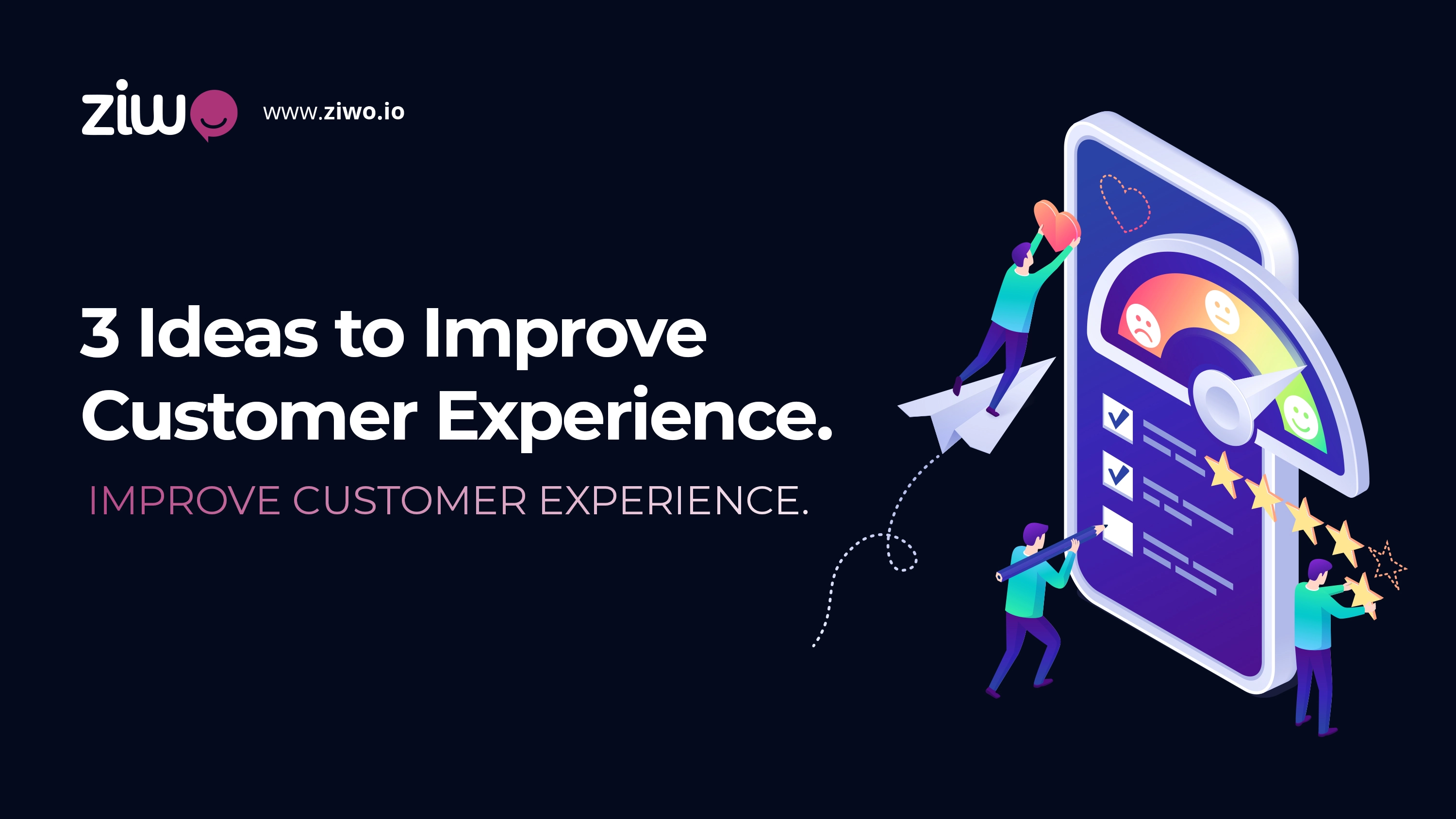
What is Customer Experience Improvement?
Improving customer experience is an ongoing process. It enhances how customers view your brand at every important step of their journey. Improving an experience that acquires the customer’s satisfaction starts with determining specific data about the qualified customer:
- Pain points
- Needs
- Form expectations about your product/service on every direct interaction or impression.
What is A Customer Experience Improvement Program?
A customer experience improvement program is a subsidiary path designed to upgrade a specific customer experience with certain personal qualities. By using feedback tools and data collection, you can find items that will enhance the experience. You can also analyze how effective they are expected to be.
You will share this program with the product development teams, which will improve the experience for this buyer persona.
Customization is a key requirement. You can find multiple tracks or programs for each product. This helps improve every prospect's experience.
Benefits of Improving Customer Experience
Clients always prefer businesses that invest their resources in improving customer experience. They believe prioritizing the customer experience is the best way to keep up with their needs and develop preferences.
If you did not improve the customer experience and it stayed the same for a year, that’s a warning sign! The customer undoubtedly experienced situations and events that affected his personality and changed his habits. New activities became part of his daily routine, while other activities disappeared. This change affected his relationship with the brand in some way.
1- Customer Retention Improvement
If you are open and regularly engage with your customers, they will stay loyal to your company. This means understanding their needs and personality traits as they change over time. Customers get notified of how you comprehend their needs and improve their experience.
i.e., in case some customers complain of poor packaging bags they use when carrying their purchases from your retail store. On another visit, the same customer found new bags made of stronger materials. These bags could carry heavier weights better.
2- Client Base Expansion and Creating a Distinctive Brand Image
Customer loyalty and your company’s success in retention lead to converting them into organic marketers who recommend your products to their relatives and friends, leading to referrals to your yard.
All about word of mouth, which is powerful enough to reduce the time a lead takes to convert into nearly half the regular period. Your loyal customers wouldn’t have suggested your products if they hadn’t been sure enough about the products your business offers. Your client base expands regularly as the customer acquisition rate increases and the churn decreases.
Your company's reputation and distinctive brand image will develop over time. By connecting your company to a specific positive value, you’ve produced the image you seek.
Whenever your brand name is mentioned, a particular value pops up in the audience's minds. What is this value? Is it transparency? Quality? Fast-delivery? Or caring?
3- Customer Lifetime Value CLV Increase
As you know, customer lifetime value is the total amount the customer spends and pays the business in return for offered services or products. Improving the customer experience directly impacts this value.
If the customer experience is positive, he’ll be keen to repeat it in shorter time frames. The CLV increase leads to investing more money in marketing campaigns to start new customer life cycles with new leads.
4- Acquiring a New Competitive Advantage
By the end of the 20th century and the beginning of the new millennium, customer experience has become a competitive advantage that drives customers to prefer one product to another. Now, humans are looking for an understanding of quality; here, the term convenience becomes key in every process. Buying the best product in the world is useless if the customer has a hard time getting it. Friction, delays, and miscommunication can ruin the experience.
Has your customer felt comfortable until he made the purchase? What do you think about after? Do you know if this comfort continued? These questions drive you to improve CX, adding unique traits that make your business distinctive.
5- Better Resource Management and Operational Costs Reduction
One key idea we will discuss later is using automation and AI to enhance customer experience.
These advanced features haven’t become a luxury. They have become an important factor that helps your staff make the most of every minute and manage time well. Now, your agents will better help customers and leads.
3 Major Ideas to Improve Customer Experience (CX)
To improve customer experience, your business should adopt many practices and activities. When you focus, you can easily learn that all of them rely on three central ideas:
1- Remember, Customers Keep You In Business
Every element in your business must be given a degree of importance and priority to achieve success. However, the customer has the highest priority.
The customer-centric strategy means that all your business operations focus on the customer. This helps improve their experience and keepsThe survey should have multiple-choice and essay questions. This way, customers can share their opinions in their preferred way. them coming back.
So, what are the best ideas for improving the customer experience and putting them under focus?
A- Understand Your Customer
One important part of improving your work is to regularly check your customers' needs and preferences. Pay attention to their pain points and other feedback.
All voices of the customer tools include service feedback surveys or delivery satisfaction surveys. Also, the links you send via WhatsApp, SMS, or any other customer satisfaction surveys are essential, but how you deal with them matters. How do you process the input data that you gathered?
The survey should include multiple-choice and essay questions, where the customers can freely express their opinions in the way they prefer. This method is popular among those used to improve customer experience with call centers.
Your customer has already purchased; why do you still need to recognize him? Simply, your business can not be developed without regularly updating the knowledge about customers like:
- Needs
- Pain Points
- Product Expectations
- Comments on Products/Services
- Feedback about frontline employees with whom customers dealt
- Impressions about the checkout processes and completing payments
When your customer feels that every opinion he shares is appreciated, he'll repeat feedback engagement. How can this happen? Let him see the changes. Show that these new features, programs, and tracks come from our customers' requests.
Also, understanding customers is not only about the long-term vision; it also helps you handle any issue the customers face instantly, so you can manage any situation the way it should be.
Sentiment analyzing tools can quickly achieve that while the customer is on a call or a text conversation with one of your company's agents.
You need to gather core information to achieve 'Customer Comprehension.' What are the primary questions you should address in this case? Examples:
- What is the best communication channel the customer prefers to use?
- What encourages the customer to purchase a product or subscribe to a service your business offers?
- What is the best method your customer prefers to make a purchase? A phone call? Online? Or a brick-and-mortar store?
- What is the most appreciated value in any brand from the targeted audience? To what extent is this value present in your business? Rate it from 1 to 5, where one is rare and five is abundant.
Remember: You should accurately know the pros the customer sees about your brand, not only the cons!
B- Update Customer Journey Mapping
A customer journey expresses the extent to which you know customers’ interactions and how they deal with situations related to your business or the issues your products solve.
When was the last time you updated the customer journey? After the previous update, you should review the urgent opportunities and challenges in the market. Is there any chance to modify or update a customer touchpoint?
By efficiently managing the customer journey, customers receive message campaigns that express their needs and interests. Your sales agents also call them, offering them new services within their scope of interest.
Agents and account managers who deal directly with customers are considered primary references for updating customer journey maps.
The customer may get extremely upset about something in your business. They might then complain on every platform, sharing their bad experience.
In this case, you need to evaluate the customer journey and develop the element in question to avoid repetition of this case again.
Remember: A great customer journey has smooth touchpoints. There should be no obstacles that could make the lead lose interest or the customer leave.
C- Personalize!
Does using the same product mean having the same experience? Imagine you’re a SaaS business offering a business management solution. Individuals, including freelancers and consultants, might utilize it, as might companies seeking software for their staff.
The question is: Will the individual experience be the same as the company’s experience? If so, then your digital product is already a failure.
Even if you sell the same product, a key difference in the buyer persona creates a unique customer experience. This also affects the product's features. For example, individuals might need features businesses do not need, and vice versa.
Thus, customize the product plans based on the personalities of the targeted audience. In this case, designing two major plans is a good idea.
Let’s go to a higher level! Customer loyalty helps your company keep clients. Happy customers often recommend your products to their friends and family.
This can lead to more referrals for your business. What if you learned that there are features small businesses don’t use, and medium-sized enterprises need? No company uses the advanced features except for large enterprises. This divides the business plan into three sub-plans to satisfy every size preference.
What if the consultant needed options that the freelancer did not? The individual plan can be divided into two sub-plans.
In another business case, a customer prepares for the summer season by purchasing new apparel. He decides to buy a white shirt; your e-commerce website displays the recommended pieces that might match his interests.
Personalization is a dominant idea mainly applied in e-commerce and online retail stores to improve customer experience.
When we define the major points in customer experience personalization, you can find them as follows:
- Customize messages and offer every suitable communication channel.
- Recommend products/ services.
- Create loyalty programs that match their preferences. Offer options like collecting and using points, referral rewards, or promo codes for discounts. This encourages customers to make repeat purchases.
- Mention the client’s name in every contact: text, verbal, or in-person.
- Send greetings to customers on special occasions like birthdays and anniversaries, such as the first anniversary (purchase/subscription/contract/…).
- Send greetings on public occasions, religious, national, or else. For example, (Ramadan, Christmas, Passover, Diwali, UAE National Day, Commemoration Day, …)
Remember: The customer experience is continuously variable. When customers feel you’re unaware of their new demands, they instantly look for a suitable alternative.
D- Improve Customer Service
Customer service is the main pillar of improving customer service. Now, customer service has a direct impact on the decision to purchase. The customer checks first for efficiency before making the decision.
Here are the most essential qualities that should exist in excellent customer service:
1- Omnichannel communication with customers.
2- Continuous improvement of response rate and reduction of customers' waiting time.
3- Completing the customer life cycle to save time and turn every sale into a continuously generated revenue.
Improving customer service should include transparency and empathy, which are key elements in call center telephone etiquette and text conversations. For example, if the customer faces a technical issue, the agent should first show his deep sorrow for the customer's problem.
If the issue won’t be resolved during the call, the agent should inform the customer of the nearest contact. This relieves the customer from anxiety or nervousness caused by the timeless waiting.
Tell the customer this line: ‘One of our technical support team during 24 hours from the time of issue submission.’
Also, your customer service call center should be available 24/7, so customers can get help anytime, regardless of location.
Remember: Adding self-service is a two-way benefit, as it helps the customer implement the solution himself or get an answer.
Bonus: Support the customer with the next issue avoidance content via email with the correct links attached. The content helps the customer how deal with issues 2 and 3, as he’s recently passed through issue 1.
E- Reduce Customer Friction
Friction might occur! Every touchpoint might face the customer's challenges that should be processed rapidly to avoid a lead’s loss of interest or a current customer leaving the company.
Have you ever tried to become a customer in your business? This could be an odd question. However, putting yourself in your customer’s shoes is a practical and easy way to update friction points regularly and determine the bad situations he passes by.
The top-down approach is part of customer-centricity. Thus, if you’re a business owner who seeks to apply the principle that the customer comes first in all business dealings, you should become an influence on your employees so that they can follow you. Every value you need to be found in your work environment should start from your study.
What are the touchpoint sources? It’s an important question that differs from one company to another. But we guide you to the most essential points you might miss!
- Client Onboarding to Use a Particular Product/Service/System: Some products might need organizing sessions that train clients and lead them to the optimum ways, as it’s a brand new product or targeted to a particular group. Although this phase occurs after signing the contract or purchasing, the client might submit a refund if they felt he hadn’t been well trained. This is one of the ideas that can be applied to improve customer experience in the banking sector.
- Data Available on the Internet and Official Platforms: Does the available information about your business help any lead needs to discover your brand?
- Communication With Support: Does the support team work with customers at the expected level? Are all the communication channels that the audience uses available? Is WhatsApp support available?
One of the main reasons friction might increase is the absence of a professional customer success team. This team is responsible for leading clients to achieve the most product benefits through a long-term relationship; the team members should explain and teach them how to avoid issues proactively and the best paths to achieve customers’ goals using the product.
Remember: You can establish a forum on your business website or one of the social media platforms to regularly determine the friction points and start a community of clients, where every client helps the other when he meets a similar issue.
F- Engage With Customers
How do you deal with the comments your clients leave on social media? Do you take them seriously or ignore them? Do you consider your business rating on Google, G2, Capterra, etc., and the reviews customers submit? Make every comment as if it’s delivered from your only customer.
When you respond in public, you should follow the next instructions, even if it is a fake comment that aims to be part of negative online propaganda affecting your business reputation;
- Respond to the customer quickly, clearly, and directly.
- Keep the tone of appreciation and response.
- If the mistake really happened, take accountability for it and discover after an internal investigation that it occurred out of carelessness.
- Offer help and show interest in more details through private communication, such as a phone call or WhatsApp.
Remember: Customize the responses and never copy old ones to previous complaints, as this causes the customer to feel more upset.
G- Audit
You need to review the key performance indicators (KPIs) to recognize the products and services that need more attention to align with your customers' expectations.
This audit should include the applied strategy and the key pain points that customers might meet. After this audit, you need the actions needed to implement as follows:
- Most Urgent Actions
- Med-urgency Actions
- Low-urgency Actions
Before moving to the KPIs, there’s a step in advance: brainstorm the answers to these questions:
- What encouraged the lead to convert? What value has he found at your business?
- What is the value that a customer has lost and pushed him to look for an alternative?
Finish the audit by determining the customer satisfaction KPIs, which will include, in most cases:
- Net promoter score (NPS)
- Customer Service Satisfaction (CSS)
- customer satisfaction score (CSAT)
- Customer Health Score (CHS)
- Customer Churn Rate (CCR)
Remember: You can track center performance scores better and faster with the help of customer satisfaction survey template Excel sheets
2- An Improved Customer Experience Starts With Happy Employees
There is no contradiction between the ‘Customers come first’ principle, which we discussed in the previous section, and caring about your employees. Your employee is your first customer!
We assure you that customers are the core of improvement; if you don’t know enough details about them and their needs, you won’t be able to achieve your business goals.
On the other hand, your team is the engine that moves the whole entity towards its desired destination. This can not happen without their engagement and belief in the company's values.
Employees are responsible for implementing your distinctive ideas to improve customer experience. Thus, they need to receive appreciation and care to represent your company in the best possible way. Remember that your employee satisfaction is as important as customer satisfaction.
A- Give Employees More Control
Imagine the following situation: a qualified lead requests a special discount from a sales agent in your company; this discount exceeds the value the agent had offered. The agent could not respond negatively or affirmatively, as it was out of his control, so he clarified this to the lead. This happened after a final call that lasted for nearly an hour. The lead lost interest out of boredom, and the deal was canceled.
The deal would have been successfully closed if the lead had just received approval or promised to apply the discount. Adding more authority to the employees reflects the deal's success and customer service.
What if you're selling CRM and clarified to your agents that they can sell the solution at 50% off for the single subscription if the number of seats exceeds a specific limit? This would give the employees more freedom to achieve goals.
Remember: Delegate the task to the right employee based on his acquired knowledge by reviewing the skill pyramid your company adopts.
B- Conduct Pulse Surveys
Pulse surveys are essential tools that determine employees’ feedback about your company, its organizational culture, and the values it adopts. They turn into a group of practices and activities that the business applies. This type of survey unveils the most critical strengths and weaknesses accompanying employee experience in the business.
Remember: Create pulse surveys that are accurate, short, and direct to enable employees to answer the questions at the expected level of engagement and efficiency without any boredom.
C- Update Loyalty Programs
Think about it: Is retaining a high-performing employee at your business more expensive than hiring many individuals for the same job role more than once?
There is no need for much analysis; keeping excellent employees is less costly, as they help you qualify calibers capable of leading the company toward success.
It lowers operational costs and the growth rate. As the number of employees who stay at the business grows, they become more aware of its vision, objectives, methods to follow to achieve them, and compliance with its values.
A new employee's arrival reflects on consumed time, as recognizing the business and its elements takes away from your precious time, which might have been used in developing a new idea to improve customer experience. So, time is always invaluable.
Employee loyalty programs are among the most efficient applications that can lead to employee retention at your company, as employee feels appreciated financially.
But how can you set a budget for the loyalty programs?
Calculate the total budget you need to rehire all the available employees in your organization. On the worst estimate, you’ll need to hire a new employee once every three months. On the best estimate, you’ll employ once a year.
Let’s take the average, which is 2.5 times the value of a single hire. By repeating this process with every position and accumulating the budget for all job roles, you can get the total loyalty program/year budget.
Now that you’ve determined the budget, how will you utilize it?
You can divide them according to the department. For example, you can set a loyalty program for a department that costs 100K USD yearly, while another consumes 200K USD. In this case, you need to develop tiers or levels of remuneration. Good employees can move to the upper tier as the department becomes more expensive.
There are many examples of loyalty programs, which might be as follows, sorted from low to high values:
- Coupons and purchase vouchers.
- Low-value short-term bonuses.
- Local Paid Holidays (Full board/all-inclusive)
- High-value long-term bonuses.
- Vacation allowances
- Employee Stock Purchase Plans (ESPPs)
- Revenue sharing
Remember: Let the employees share feedback about the loyalty programs to avoid spending their budget on ideas outside their area of interest.
D- Appreciate Employee Contributions
As previously discussed, appreciation could be financial rewards, but moral support is still essential. It’s important to let the employees know they’re valuable assets in the company. Their voices are heard, and their opinions can change the company's path. How can you actualize this appreciation?
Appreciation starts from turning competencies into badges and levels based on employees' monthly performance and KPIs. For instance, the employee receives:
- The bronze badge is for the employee who covers all their KPIs in a single month of a quarter.
- The silver badge is for the employee who achieved the expected goals throughout two months in a quarter.
- The gold badge is given to the employee with the covered KPIs during an entire quarter.
The employee of the month is the one who has proven their efficiency during the month in attendance, performance, behavior, and handling last month's comments. He also achieved every task's objective, turning it into a key step on the company roadmap toward its vision.
The objective might be closing a certain number of deals, supporting a certain number of clients, generating a certain number of qualified leads, and other objectives that differ according to the job role.
You can show appreciation by carefully listening to your employees. Why don't you create a suggestion box for your employees to share their opinions and ideas with you to improve customer experience?
By looking into a study that Gallup conducted, companies' production increased by 18%, which translates to a profitability increase of 23%, when they include engaged employees who find their contribution matters to the employer.
Remember: Deliver an appreciation certificate or token that drives employees to maintain their professional level or promotion to the next level.
E- Train Employees
If you succeeded in retaining your employees and keeping them engaged, that’s good! But, you’d better manage their self-development plans, to keep their skills updated and ensure you always have the top-tier talents.
If your employees hadn’t developed their soft and hard skills, they wouldn’t have known what are the uprising tools in the market, and their position in the talent pool. Never make your busines a comfort zone for employees, this will affect their progress, as well as the company’s.
To keep your employees self motivated and never become a burden, you always need to empower them with knowledge and experience:
- Conduct intensive workshops to let a certain depatrment acquire a new competency.
- Organize webinars and office seminars that make your employees aware enough of a new business expression like: ‘Being Proactive with customers to improve their experience,’ and how every department benefit from.
- Recommending key courses or diplomas to employees that benefit certain disciplines in their career paths, you may also connect a distinctive salary raise with completing the curriculum.
Remember: Make every learning experience rely on a two-way communication or discussion not just an instructor delivers information. This guarantees employee engagement that processes received information. This makes employees better individuals.
3- Incomparable Customer Experiences Cannot Occur Without Tech
Technology is no more a luxury for companies, since every business, whether it offers service or product manages a website and an app, enabling customers to purchase, subscribe, book, or else. So, digital transformation and online presence a common factor in every developing business.
Now, Tech is a kind of obligatory element, if your business hasn’t started adopting it, in most cases, there’s a competitor who will. By adding new information technology assets, the competitor gains a new market share, which taken fom businesses that stayed still without taking any steps ahead of the market. These IT resources might be software, equipment, ..etc.
The question is: what are the ideas to improve the customer experience using technology?
A- Embrace the Omnichannel Mindset
Customer experience consistency and connecting on all levels clarify how customers matter to your business. So, the customer gets his request, regardless of the platform or any channel used.
When the customer buys a product from your retail store in his neighborhood, a POS connected to a CRM stores all the purchase data. If the customer purchases a product via app, the new data is added to the historical data, mentioning the delivery date and time.
By monitoring buyers' purchases, your business can deliver a more personalized experience. Does a male customer buy any hair care products? The next time the customer uses your app, beard trimmers, beard conditioners, and other related products will pop up as recommendations.
Even if the customer visits one of your company’s sales outlets, after the service is completed, the customer automatically receives a message that includes a link through which they can leave feedback about their last sales outlet visit.
Providing your business with omnichannel support so that he can communicate with your agents via email, WhatsApp, website live chat, social media messengers, phone call, and in one of the branches.
Whenever a customer starts a conversation, your business is prohibited from responding to his inquiry through the channel he has chosen.
Try improving operations and using available channels and tools optimally! Therefore, if you use one of the CRM and contact center software solutions, improve the hierarchy you adopt to organize customer data in the software. This will give employees more access to the files, whether recorded calls, WhatsApp texts, etc.
Remember: Make your agents available 24/7, but interact with them through the most preferred platform.
B- Harness the Power of AI and Automation
Using an open API embedded in software lets the business solution integrate with any other internal system your business has developed. Your customer data is now integrated to deliver comprehensive services, and talk to the customer’s mind.
Thanks to conversational generative AI and innovative analysis tools, your customers get more help, whether in the long term or handling an in-progress conversation.
AI can answer FAQs and support customers with basic queries, saving customer service agents much time and effort.
Automation and creating practical workflows make the customer experience much easier. When a lead enters a sales pipeline, it transfers from one stage to another according to the agent's workflow tasks at each touchpoint.
Remember: Using innovative analytical tools helps you improve the customer experience by meeting their needs.
C- Make Self-Service Support Available
We've discussed that customer service improvement is part of improving customer experience, mentioning self-service options.
How can you harness technology to provide self-service options for customers?
According to a survey by Harvard Business Review, 81% of customers prefer solving the problem themselves before asking for support. This insight makes providing self-service practices a high priority.
We've discussed initiating a forum that creates a community that deals with the most common issues they face while using a product or service from your party.
Before the community, there should be a knowledge base that customers can use as a manual, looking for precautions and instructions, resolving techniques, etc.
Try to organize the knowledge base into categories, alphabetically, from the most common issues to the least common ones, or based on your customers' query preferences.
Also, follow these instructions when building your knowledge base:
- Add a search bar with an auto-suggestion feature that displays the main topics related to the customer's entered keyword.
- Use different formats of content. Text might be necessary for SEO purposes, but do not ignore visual content, especially videos, as they have a more significant fan base, which indeed serves SEO. So, with every piece of content that includes instructions, attach a video that helps the customer simulate the instructor to achieve the goal.
- Add an option ‘Haven’t found a resolution for my problem’, which transfers him to a form he fills. The form notifies the marketing team that missing content should be added or that the content is challenging to approach. Also, the form turns into a complaint ticket, which triggers the technical support team to communicate with the customer as soon as possible.
Remember: When developing a knowledge base part of your business website, put the same effort into the mobile version as the desktop version.
D- Refine UX Design
What if you realized that using a simple user interface UI for the web or the app increases the conversion rate by 200%? What’s your impression when you know that customers do not repeat visiting a website whose user experience UX does not meet their expectations?
Be confident of the insights that you’ve just read, as they’ve been approved by Google and are expected to increase gradually. These data show how important it is to design a user experience that aligns with your improving customer experience principles.
Here are the most important considerations you should follow in UI/UX design:
- Focus on the user (Build an experience that speaks to your customer.)
- Design consistency with your brand’s other elements.
- Content hierarchy and seamless website organization.
- Displayed content should align with the context.
- Providing the user controls and facilitating the data request process.
- Accessibility and letting the customer achieve their goal from navigation and site exploration.
- Usability testing.
Remember: the difference between user experience and customer experience is that the customer's digital experience is part of their experience with your business.
E- Find a Cloud Call Center Software to Accelerate Your CX Transformation
Imroving customer experience is a long mile and a continuous journey that needs various resources, tools, and success partners.
When you deal with a CPaaS provider, you need a business that provides a reliable contact center software, which qualifies your entity to achieve an excellent customer experience transformation.
We introduce to you ZIWO, the #1 AI-supported cloud contact center software in the UAE, GCC, and the MENA region.
